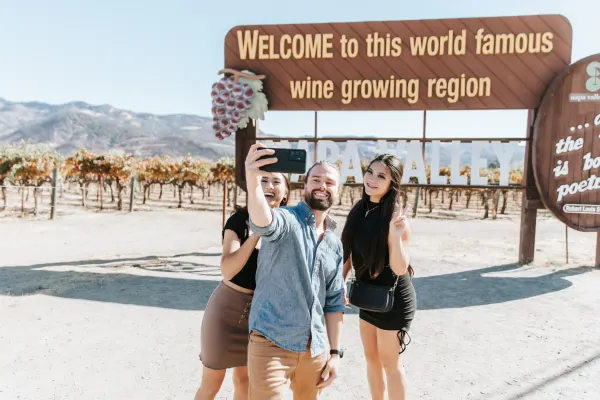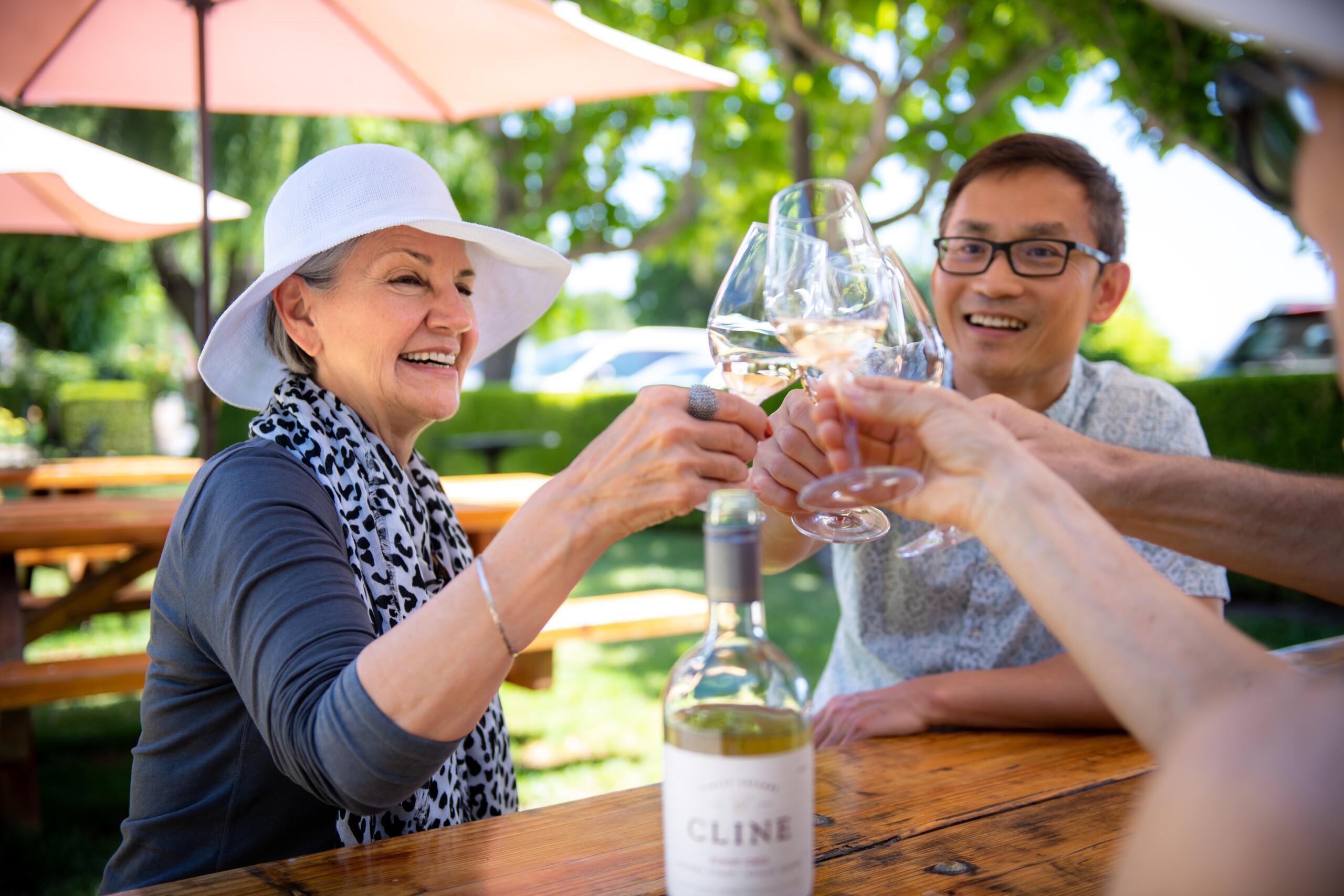Napa County and Napa Valley

Napa County, bordering Sonoma County and consisting of just under 768 square miles, was one of the original counties established when California was granted statehood in 1850. California was part of a large land grant from Mexico, known as the Mexico Cession of 1848, which was a condition to end the Mexican-American war and included California, Utah, Nevada, and the western half of both Colorado and Arizona. The area that would become Napa County consisted of twelve defined “ranchos”, those pieces of land transitioning into white settlers’ hands through land grants from the Mexican government. Just as the town of Napa reflects the history and the presence of the Napa Indians who lived there, many of the names of areas, towns, and roads are indicative of history and the transitional events, people and places surrounding the Indian tribes, Mexico, and early American settlers.

Exclusive Muir Woods, Napa & Sonoma Valley Wine Tour
The only wine country tour to combine three Napa & Sonoma Valley wineries with a morning excursion to San Francisco’s stunning Coast Redwood forest – Muir Woods.

Small Group Napa Valley Reserve Wine Tour
This small group Napa Valley wine tour from San Francisco features seated wine tasting at 3 of Napa’s best-loved wineries, including the 13th century-style castle at Castello di Amorosa.
While Europeans explored the Napa Valley area in 1823, it wasn’t until the early thirties that the first Anglo-Saxons settled there, with George Calvert Yount being recognized as the first to do so, in 1831. The town of Yountville honors his name and pioneering contributions. At that time there were six Native American Indian tribes in the area: Soscal, Ulcus, Napa, Kymus, Callajomans, Mayacomos, living from the south end of the valley to the north, respectively. A number of factors reduced the Indian population in the area: the inter-tribal fighting, fights with local white settlers, and a small pox epidemic in 1838; There is little evidence of their existence today, other than in the names scattered throughout the valley.
Settlers began to congregate in the area around the middle of the century, ranching with livestock, and farming grains and fruits, as well as silver mining, for which Napa County became rather popular, attracting many a panhandler and the entrepreneurial businessman supporting the area’s needs. Napa’s identity and shift toward wine as commerce can be traced back to John Patchett who established the first commercial vineyard in the area in 1858. But that grew more substantially in the early 1860s, with two now prominent names in wine, Charles Krug and Thomas Rutherford. While Mr. Krug was already a winemaker, his marriage to landowner Edward Bale’s daughter gave him twenty acres of land just north of St. Helena for him to pursue winemaking in earnest and he is credited with establishing the first commercial winery in Napa County. And Mr. Rutherford married the daughter of George Yount, subsequently receiving more than one thousand acres as a gift of land in the area that would eventually become the town of Rutherford.
The late 1800s and early 1900s saw the area endure an outbreak of Phylloxera – the root eating insects, the prohibition era, and the Great Depression, so winemaking in the first region was significantly stunted. Andre Tchelistcheff brought in new wine processes to the Beaulieu Vineyard and the area in 1938, and those techniques moved the winemaking industry into a new era in Napa. Brother Timothy and the Christian Brothers moved from producing sacramental wines, into full commercial production and helped drive California’s burgeoning wine industry after the end of World War Two. The next significant step in the growth of the area came when Robert Mondavi separated from the Krug family estate and launched in Oakville, the first of the large scale production California wineries in the area since prohibition.
It was the Judgment of Paris wine competition of 1976 that really established California, specifically, Napa Valley wines, when The 1973 Chateau Montelena Chardonnay and the 1973 Stag’s Leap Cabernet Sauvignon took the top prizes in white and red wine respectively, as well as 14 of the 20 prizes, topping the once dominant French wines. And with that, the California wine industry took off significantly and it has maintained its standing as a preeminent wine producing region ever since.
While grapes are grown throughout Napa County, it is Napa Valley that is the area of greatest concentration of vineyards and is designated as an American Viticulture Area (AVA). This valley runs along the western edge of Napa County, along the Sonoma County eastern border, with the two separated by the Mayacamas Mountain Range. Napa Valley is bordered on the eastern and northern sides by the Vaca Mountain Range. The valley’s Mediterranean climate and soil make-up are ideal for growing grapes, with various microclimates and soil conditions within the valley favoring certain varietals. The southern end of the valley sits at sea level on the bay, is more opened and exposed to the bay breezes, and so offers a cooler climate, along with sediments deposited by the bay over eons. The northern end of the valley rises toward the foot of Mount St. Helena, ending at the town of Calistoga which has soil containing ash and lava from the area’s volcanic history, and the enclosure of the mountain ridge keeps the warm air locked in at the north end. The western mountain ridge tends to get more precipitation than that of the eastern ridge, and so the east side of the valley provides a more arid setting. Accordingly, the different varietals favoring the particular conditions will be planted in the towns which suit them best, from south to the north: Napa, Yountville, Oakville, Rutherford, Saint Helena, and Calistoga.
When the tourists began visiting California Wine Country in large numbers, they came to Sonoma Valley in far greater numbers than Napa Valley. This was in no small part due to Sonoma’s proximity to San Francisco – just 45 miles beyond the Golden Gate Bridge, compared to Napa Valley’s 60 miles. Sonoma also presented itself as being more accommodating to the public with more tasting rooms, free or cheaper tasting flights, and a more inviting, less formal atmosphere. But Napa Valley became a household name after the Judgment of Paris gave it the grounds to launch a successful promotional campaign, soon overshadowing all other “neighborhoods” in the American wine business. Now the word “Napa” is synonymous with “wine” in many people’s minds. Some of the most famous names in American wine have their home addresses in the towns along the Napa Valley Highway 29 corridor. With 340 wineries and 4.7 million visitors per year, Napa Valley is the second largest tourist attraction in the state of California behind Disneyland.